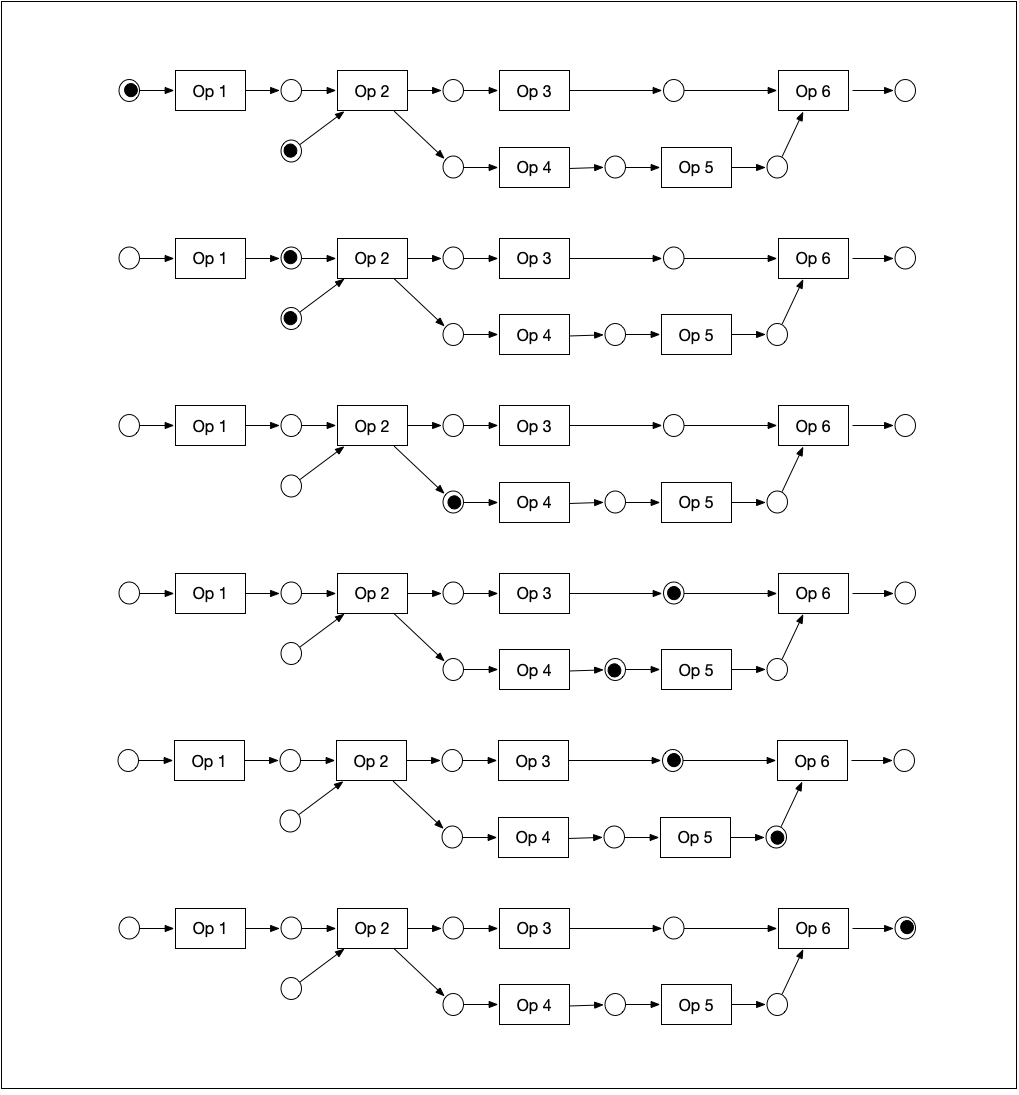I have some background in Petri nets, and in my last UML training, the trainer explained how activity diagrams are essentially a form of a Petri net with Petri net semantics.
Now read that fork and join symbols are used for modelling concurrency in UML activity diagrams, and I am a bit unsure whether they are actually necessary or whether they serve a deeper purpose.
It seems like a fork could just be replaced by a no-op Action that relays from one incoming link to many outgoing ones. Same goes for a join node, which could be replaced by a no-op node that syncs the incoming arrows. Many times, the no-op action could be eliminated by directly attaching the arrows to the action leading up to the fork or following the “join”.
The only thing that might indicate the necessity for a join node would be the “join specification”, but that seems like an infrequent use case.
Here is an example of a petri-net evaluation without forks and joins:

3
Normally there is only a single active state. Fork creates more active states that can then propagate independently.
There is one thing you are missing with regard to join: you can only pass join when all inputs are incoming. That cannot be modeled simply by more incoming connections.
You can perfectly model the states between fork and join by doing a Cartesian product between and then exhaustively modeling all the transitions between them.
Fork and join simplify the diagram by keeping the logical states of each part visible.
The UML specification https://www.omg.org/cgi-bin/doc?formal/17-12-05.pdf states
As an ActivityNode may be the source for multiple ActivityEdges, the same token can be offered to multiple targets. However, the same token can only be accepted at one target at a time (unless it is copied, whereupon it is not the same token, see ForkNodes in sub clause 15.3 and ExecutableNodes in sub clause 15.5). If a token is offered to multiple ActivityNodes at the same time, it shall be accepted by at most one of them, but exactly which one is not completely determined by the Activity flow semantics.
In other words, the UML specifies that tokens are not copied by default. Copying of tokens by default is what I assumed from my previous exposures to Petri nets.